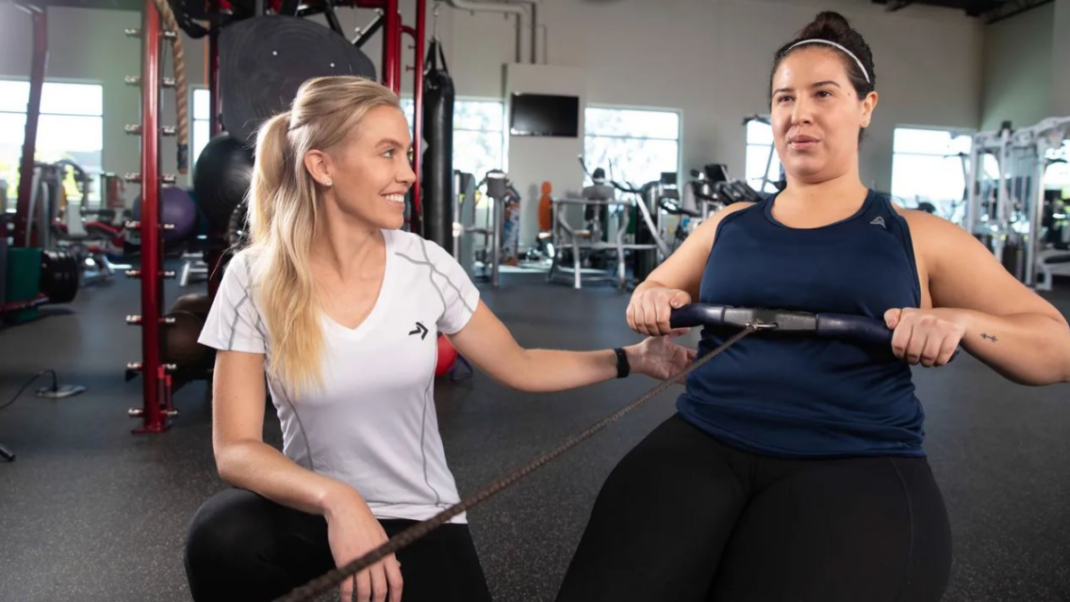Kicking Around New Kickboxing Ideas
Experienced teachers know that class variety is one secret to long-term success and self-preservation. Teaching a wide repertoire of class modes—for instance, step, indoor cycling and kickboxing—can help prevent burnout and improve your teaching skills. Developing options within a mode—endurance cycling, mind-body ride and power spin, for example, or step interval, multiple step and advanced step—is also important.
Fitness kickboxing has reached the point where we need to offer different format and level options before classes plateau and then drop off. Do you notice a need to teach different levels of kickboxing when veteran participants hone their skills in the same class as novices, who require you to cover jab, cross and front kick basics? What about introducing kickbox circuits? Simulated fights? Skills and drills classes? Facilities offering generic kickboxing classes now have an opportunity to branch out.
You can create new formats using the teaching skills you have, or you can choose from the four kickboxing-based classes listed below. Either way, you’ll appeal to a wide demographic, making veterans and beginners happy, healthy and hungry for more kicks, punches and combos!
Kickbox Boot Camp (All Levels)
Class Description. Combine two popular, skills-oriented exercise classes—kickboxing and boot camp—into a sport-specific, high-energy cardiovascular circuit. My “GI JABB Kickbox Boot Camp,” for example, leads off with nonstop, rhythmic fighting combinations instructed in a regular group format. In the second part of the class, short bouts of group cardio kickboxing activity alternate with sport-specific exercises and drills performed at various stations.
Typical stations include tire drills simulated with a floor ladder to improve footwork; jumping jacks, ski jumps and rope jumping to improve basic skipping ability; and shadow punching to work on technique. At the punching station, participants wrap an Ultra Toner™ figure-eight resistance band around their back, holding one end of the band in each hand as they lead (punch) and cross jab. At the kicking station, participants wear a Xercuff resistance band (tubing formed into a circle with padded ankle straps attached to prevent skin abrasions) and perform roundhouse extension flaps. (Stand against the wall, lift your leg into the roundhouse preparation—or chamber—position, then slowly extend your roundhouse kick against the resistance.) A third station offers target front kick drills, in which participants pair up and take turns holding a clapper target (kicking paddle) and performing 10 alternating sets of right and left leg snap kicks. The clapper paddle provides audial feedback and requires the kicker to aim and execute good form.
Class Format. Before class begins, assign participants to a station so they can quickly make the transition to the second section. Set up the equipment around the perimeter of the room, keeping the center clear for the group cardio stations.
Warm-Up: 6 to 8 minutes as a group.
Section I: 20 minutes of cardio kickboxing combinations done as a group.
Section II: 6 to 8 independent stations lasting 2 minutes each, alternating with 2-minute group kickboxing combinations.
Cool-Down: 5 minutes as a group.
Equipment. Jump ropes, Xercuff resistance bands, Ultra Toner figure-eight tubing, clappers, agility ladder.
Ringtime Workout (Intermediate)
Class Description. This class includes timed shadow fighting, which lets participants experience how a fighter trains for a prizefight. Jump rope drills and timed intervals guide exercisers through a workout that mimics the way a professional boxer performs in the ring. “Ringtime Workout” presents 12 sets of three-minute fighting rounds that alternate with one-minute active rest jump rope intervals. During the three-minute rounds, participants partner up, facing each other as opponents to execute combinations.
Class Format. As participants arrive, have them form two rows facing the front of the room. When it is time to begin each three-minute round, instruct the front row to turn, facing the back row. The two rows should remain several feet apart as participants partner up and aim shadow punches and kicks at each other. Cue partners to respond to each other’s movements, dodging blows and looking for a simulated opening. Cue movements to occur on the musical downbeat so the class maintains a rhythm. When it is time for a one-minute rope-jumping interval, cue everyone to grab a rope, turn and face forward. While participants are jumping rope, demonstrate the next three-minute combo.
Some great combos to include are jab, jab, cross, front kick, shin block; lead roundhouse, elbow strike, back fist; lead front kick, cross, knee strike, duck; jab, cross, hook, front kick; lead roundhouse, lead side kick, back fist, slip; step lead roundhouse, roundhouse, side kick (all kicks with the same leg).
Warm-Up: 6 to 8 minutes as a group.
Section I: 48 minutes total, composed of 12 three-minute boxing rounds and 12 one-minute rope-jumping rounds. For the boxing rounds, choose 2 to 4 movement combinations. Devote 90 seconds to each side.
Cool-Down and Ab Work: 5 minutes.
Equipment. Jump ropes, punching bags (optional), boxing timer (optional). The timer can be used to mark the boxing and jumping intervals.
Kickboxercise and Strengthening (Advanced, Though Modifiable for All Levels)
Class Description. For an all-body workout that enhances muscular endurance, cardio endurance and high-intensity anaerobic conditioning, add resistance tubing work to a cardio kickboxing class. Switch among stations focusing on high-repetition resistance training, explosive movements, balance training and endurance. Do not be surprised if this workout turns out to be one of the most intense and physically challenging kickboxing classes you have ever tried!
Class Format. The format is much like a “step and sculpt” or “circuit strength” class. Participants alternate between cardio and strength or balance stations, working to elevate the heart rate throughout the class. Strength stations offer either regular or figure-eight tubing. With regular tubing, set up standard upper- and lower-body exercises, such as shoulder raises, squats with presses, single rows, triceps overhead extensions or biceps curls with split squats. Figure-eight resistance tubing allows for slow shadowboxing and chest presses. Balance stations include horse stances (stepping evenly side to side), slow kick chambers and slow kick extensions.
Warm-Up: 6 to 8 minutes as a group.
Transition and Stretch (Optional): 4 minutes of group dynamic and static stretching.
Section I: 10 minutes of continuous group cardio kickboxing combinations.
Section II: 35 minutes of 30- to 60-second independent interval stations alternating between simple cardio fighting combinations and tubing or balance exercises.
Cool-Down: 5 to 7 minutes of group core and flexibility training.
Equipment. Xercuff resistance bands, figure-eight tubing, resistance tubing with handles, Abduction Flaps.
KIA’Box Cardio Paddle (Intermediate Level)
Class Description. This intermediate class transforms the avid kickbox participant from shy kicker to swift shogun fighter. The “KIA’Box” concept relies on traditional martial arts kicking clapper drills to simulate fighting. Because clapper targets are lightweight and soft, they require little strength to hold and not much skill to operate. Participants have an opportunity to aim kicks at a target that does not have much “blow back” impact, yet offers resistance. The paddles are best used for isolation drills of basic techniques, such as front kicking, roundhouse kicking, ducking and jabbing. The drills are meant to focus on technique and intensity; a set of 10 to 15 kicks in a row should require a recovery period.
Class Format. A KIA’Box class can be successfully organized in many different ways. Depending on the number of paddles you have, assign two or three people to a paddle and announce how it will be used. Before class begins, have participants place their paddles close to them, but not underfoot. The kicking target drills can be introduced in Section II, when you and your participants can partner up and practice these drills or the many awesome traditional cardio paddle drills.
Warm-Up: 6 to 8 minutes as a group.
Stretching (Optional): 2 to 5 minutes as a group.
Teaching Transition: 2 to 4 minutes building basic combos and reviewing technique.
(Choose either Option A or Option B.)
Section I: 8 to 12 minutes of group cardio kickboxing combos.
Section II: 30 to 35 minutes of clapper drills alternating with cardio kickboxing combos: 4 to 16 stations lasting 2 minutes each, 7 to 8 clapper target intervals, 7 to 8 cardio kickboxing combos.
Option B
Section I: 25 minutes of high-intensity cardio kickboxing combos, with 5 one- to two-minute plyometric and footwork drills (including jump rope, jump shots and broad jump).
Section II: 15 to 20 minutes total for this section, composed of 8 to 10 intervals, with each interval lasting about 2 minutes. Cardio paddle drills—either 10 reps low and fast or 30 seconds for each move, choosing several moves per interval. Sample drills include power (or rear leg) front snap kick; lead leg front snap kick without shifting weight from the rear leg; squat and front kick while alternating legs; lead leg, lead jab, boxer’s bounce; double front kick (rear leg, then lead leg); lead jab, duck.
Equipment. Kicking target paddles.
The Final Kickback
Progressing your kickboxing class and offering different levels within your facility’s group exercise schedule is one of the best ways you can keep kickboxing exciting—for you and your participants. And we all know excitement leads to fuller, more energized classes loaded with participants having fun while getting fit!
When modifying intensity, be aware of the following in order to reduce injury risk:
- When increasing intensity, resist the temptation to increase movement speed. Keep the pace between 130 and 138 beats per minute.
- Think “explosive fighting combinations,” not complex choreography.
- Avoid building a 32-movement sequence just so it fits in 32-count music. Instead, build eight-count kickboxing combos that use boxer bounce or duck to finish off each movement sequence.
- Stay away from advanced martial arts moves like back kicks, crescent kicks, jump kicks and spinning movements; it is difficult to execute these safely and successfully during a fast-paced fitness class.
- Whenever you introduce a new concept, class or skill, remember to give yourself and your participants time to make mistakes.




